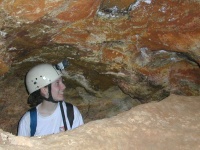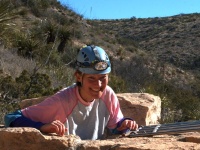Diana Northup
University of New Mexico
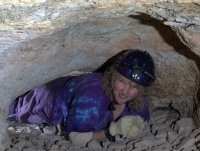
Diana at the Head of Boulder Falls in Lechugilla Cave, New
Mexico.
|
Diana Northup has been studying things that live in caves since 1984.
She has a Ph.D. in Biology from the University of New Mexico. She and
her colleagues on the SLIME (Subsurface Life In Mineral Environments)
Team are investigating how microbes help form the colorful
ferromanganese deposits that coat the walls of Lechuguilla and Spider
Cave in Carlsbad Caverns National Park (funded by the National Science
Foundation Life in Extreme Environments Program); how these deposits
compare to surface desert/rock varnish coatings (funded by the NSF
Geosciences Directorate); how microbes participate in the precipitation
of calcium carbonate formations called pool fingers; and the microbial
diversity located in the hydrogen sulfide cave, Cueva de las Sardinas in
Tabasco, Mexico. Diana has been honored by having her work featured on
NOVA and by being asked to serve as a Guest Editor for Geomicrobiology
Journal for a special issue on Geomicrobiology of Caves. She is also the
recipient of a Charles A. and Anne Morrow Lindbergh Foundation grant to
study the impact of humans on microbial populations in caves. Currently,
Diana blends the best of both worlds by teaching biology students
information searching skills in Centennial Library at the University of
New Mexico, where she is a Professor Emerita, and by actively
researching cave microbial ecology using molecular and microscopy
techniques. She is also a Visiting Associate Professor of Biology and
guest lectures in various Biology courses and teaches a Freshman
Learning Community, The World of Microbes.
Diana has been
interviewed by Teresa
Dow. Diana's
Curriculum Vita
and a list of honors is also online.
|
Penelope J. Boston
New Mexico Tech
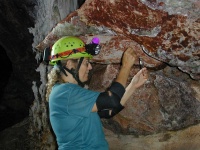
Penelope Boston sampling in Spider Cave.
Photo by Kenneth Ingham.
|
Dr. Penelope J. Boston has been studying life in extreme Earth environments
since 1979 and thinking about how to apply such information to the search
for life beyond Earth. Boston’s particular interests are in the
precipitation of distinguishable biominerals, biotextures, and geochemical
signals that can be used as biosignatures of life in Earth’s ancient rock
record and for future extraterrestrial life-detection missions. She is
particularly concerned with the patterns that microbial communities may
form in response to microbial, chemical, and physical processes. She is
also engaged in trying to uncover the underlying ecological and energetic
themes that can be seen in a wide range of geochemical microbial subsurface
habitats. Penny does a great deal of public outreach and frequently
appears in the print and broadcast press, e.g. on NOVA, the BBC, National
Geographic Channel, Discovery Channel, Learning Channel, History Channel
and many others.
Dr. Boston is Professor of Earth and Environmental Sciences and Director of
Cave and Karst Studies at the New Mexico Institute of Mining and Technology
in Socorro, NM. In addition, she is Associate Director (Academics) at the
National Cave and Karst Research Institute in Carlsbad, NM.
She is passionate about and extensively involved in educational outreach
about caves and karst issues, space exploration, and general science for
school kids, older students, elder groups, and the general public.
Penny's Web site
Kim Plymale wrote story about Penelope Boston.
|
Michael Spilde
University of New Mexico
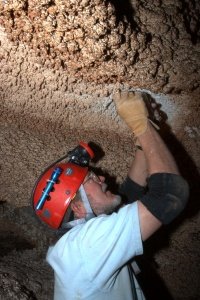
|
Mike Spilde is the Manager of the Microprobe/SEM Laboratories
at the Institute of Meteoritics at the University of New Mexico. His
skills as a mineralogist and microscopist are put to work in addresses the
geological side of the biogenic nature of speleothems in caves.
Michael's web page.
Michael has been interviewed by Teresa Dow.
|
Leslie Melim
Western Illinois University
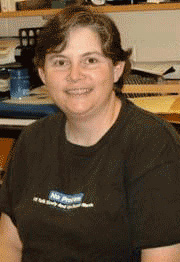
|
Leslie Melim leads the SLIME Team research on the geomicrobiology of cave pool precipitates, to determine which features are truly inorganic versus those either precitipated or mediated by microbial activity.
Leslie's web page.
|
Clifford N. Dahm
University of New Mexico
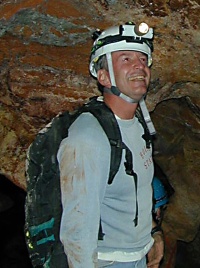
Cliff Dahm in Spider Cave.
Photo by Kenneth Ingham.
|
Need more here...
Teresa Dow interviewed him.
|
Laura J. Crossey
University of New Mexico
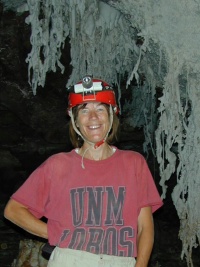
Laura Crossey in Spider Cave.
Photo by Kenneth Ingham.
|
Need more here...
Teresa Dow interviewed her.
|
Jessica Snider
Master's, University of New Mexico, 2010
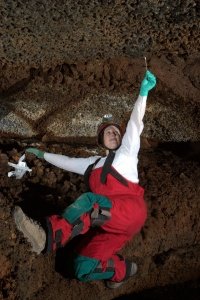
|
Jessica Snider completed her Master's in Biology at the University of New Mexico
in 2010 under Drs. Will Pockmand and Diana Northup, studying the role of roots in caves as a conduit for nutrients and microorganisms in the lava caves of El Malpais.
|
Jenny Hathaway
Master's, University of New Mexico, 2010
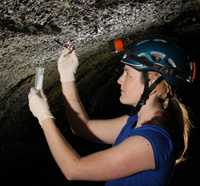
|
Jennifer Hathaway joined the Slime Team in August of 2008, and completed
her Master's in Biology at the University of New Mexico under Dr. Diana
Northup and Dr. Robert Sinsabaugh in May 2010. She earned a B.S. in Biology from Stanford University in 2001, graduating with honors. Her Master's project
focused on the diversity of bacteria in the lava tubes on Terceira Island,
Azores, Portugal, where she investigated whether there are environmental
factors influencing bacterial diversity in these lava tubes. She is especially
interested in the extent of microbial diversity in lava tubes and how these
microbes participate in cycling nitrogen in this unique environment.
|
Kathleen H. Lavoie
SUNY Plattsburgh
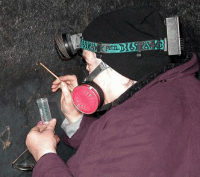
|
Need more here...
|
Lawrence M. Mallory
Biomes, Inc.
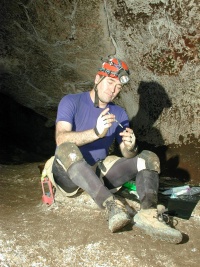
|
Need more here...
|
Louise Hose
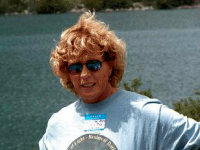
|
Need more here...
|
Carlos Alberto Cordero Martinez
Kolem Ja, Tabasco, Mexico
|
Need more here...
|
Alejadra Alvarada Zink
Universum Science Museum
University City, Mexico D.F.
|
Need more here...
|
Matt Garcia
Undergraduate, University of New Mexico
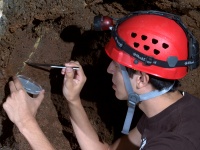
|
Matthew G. Garcia, majoring in Biology at UNM, is pursuing
research into the microbial diversity of lava tubes on the island of
Hawai’i. Matt has sampled lava tubes of different ages that are located in
different volcanic flows and that are located under different surface
vegetation and precipitation regimes in order to shed light on what
controls diversity in colorful microbial mats that coat the walls of many
lava tubes worldwide. He presented his results at the International
Congress of Speleology, which was held in Texas in July 2009. Although
born in Albuquerque, Matt spent his early years in a small (600 people) NM
town, Seboyeta, before moving to Grants, NM. His high school biology
teacher, Mr. Alexander, and his participation in a Science Fair project
shaped his interest in science, and biology in particular. He’s
particularly interested in discovering new information about living things.
|
Ali Ghadimi
Undergraduate, University of New Mexico
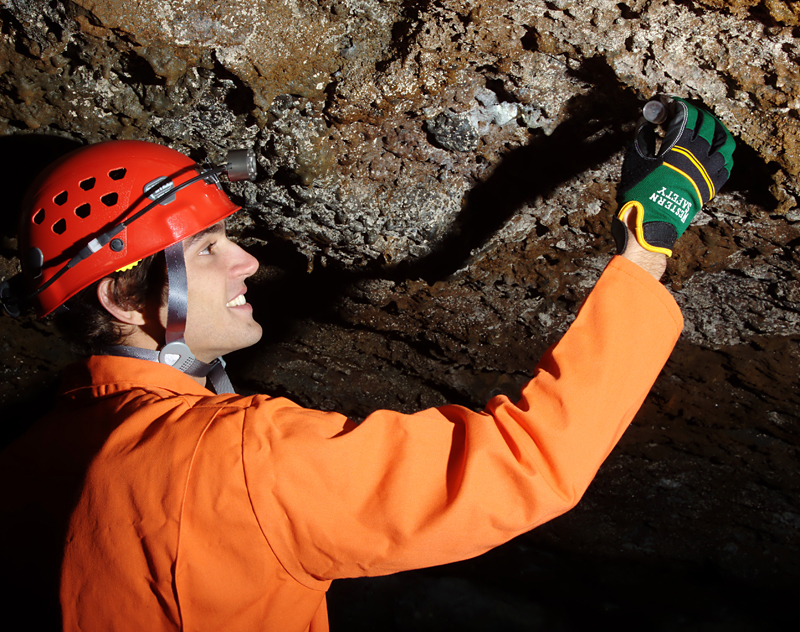
|
Ali Ghadimi is interested mainly in microbiology and is currently studying
the G. destructans fungus, which is the cause of the disease White Nose Syndrome
in bats. He is looking at several caves in the El Malpais area in western New
Mexico for any sign of this emerging disease. Additionally, he is working on
the Scanning Electron Microscope in the hopes of discovering microbial
communities hidden in mineral deposits, a project that has astrobiological
uses.
|
Ara Kooser
Ph.D. Student, University of New Mexico
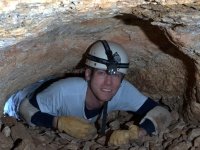
|
Ara Kooser is completing a Master's in Earth and Planetary Sciences at the
University of New Mexico under Dr. Laura Crossey and will be entering the
Ph.D. program in Chemistry, also at UNM, studying the genomics of secondary
metabolite production in caves. His master's work is a study of the
geochemistry of cave pools and what the water chemistry can tell us about
the formation of pool precipitates in caves.
|
Noelle Martinez
Undergraduate, University of New Mexico
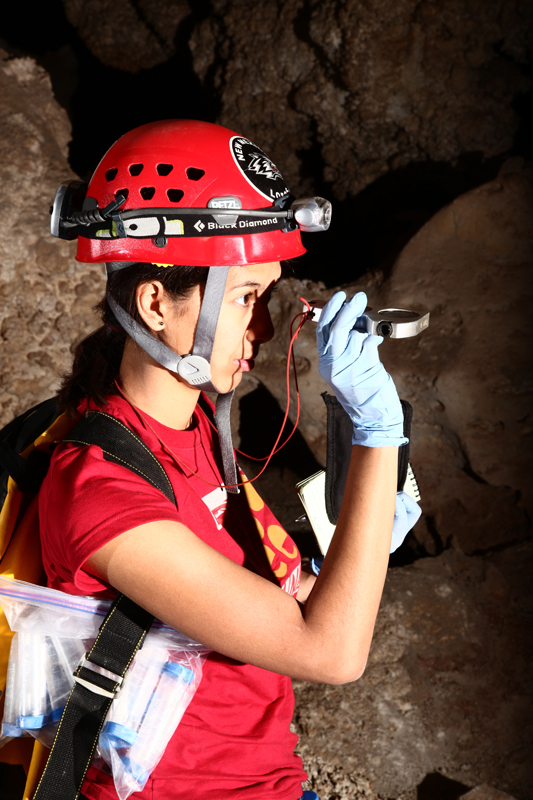
|
Noelle Martinez is studying the influence of nutrient availability on
extracellular enzyme activity in caves. Exoenzmes produced by microorganisms in
caves may elucidate whether microbial communities are most limited by
carbon, nitrogen, or phosphorus. Extracellular enzyme activity (EEA) can be
quantified to determine microbial activity and nutrient cycling
contribution.
|
Nwamaka Nwagbologu
Undergraduate, University of New Mexico
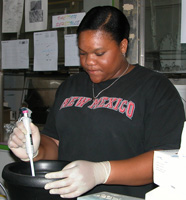
|
Amaka Nwagbologu graduated from the University of New Mexico in 2010 with a
degree in Psychology and is now attending the College of Pharmacy.
She worked in the Northup Lab from 2005 until 2010 and completed the Human Impact on Microbial
Communities in Caves project. Her projects included work on the Aeromicrobiology project and the
Desert Varnish project. She focused her efforts on sequencing, editing, and culturing.
|
Megan Curry
Master's, New Mexico Tech, 2009
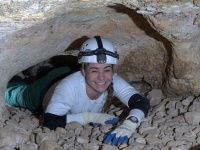
|
Megan Curry completed a master's under the direction of Penny Boston at New
Mexico Tech, studying the role of microorganisms in moonmilk formation.
|
Aurora Auwen
Former Undergraduate, University of New Mexico
|
Aurora Auwen assisted Armand Dichosa in studying the microbial communities
in the ferromanganese deposits in Spider Cave.
|
Monica Moya
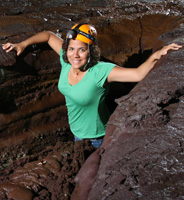
|
B.S. Biology, University of New Mexico, 2010
Monica Moya is an international student from Venezuela who earned a B.S. in
Biology, with a minor in Chemistry. She worked as an undergraduate research
assistant in Dr. Diana Northup’s cave microbiology lab. Monica studied the
bacterial composition and diversity of desert
varnish. Her work also involved the comparison of the microbial diversity found in lava tubes in El Malpais National Monument (Grants, NM).
Monica was co-awarded the Cave Conservancy of the Virginia’s Undergraduate
Research Grant, to study the microbial community composition found in the
Hawaiian and New Mexican lava tubes. After doing a one year intership at
Los Alamos National Laboratory, Monica will be attending the University of
Michigan for graduate school.
|
Armand Dichosa
Postdoctoral Fellow
Los Alamos National Laboratory
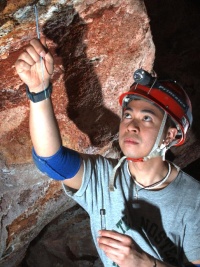
|
Armand E. Dichosa joined the University of New Mexico's Department of
Biology in 2001 as a Masters student researching evolution in the
euryarchaeote Methanospirillum hungatei, using the cell-division
protein, FtsZ, as a molecular marker. After receiving his M.S. in 2004,
he continued his academic career with the department in pursuit of a
Ph.D. under Doctors Diana Northup and Larry L. Barton, which was awarded in
2009. For his Ph.D. he investigated the biogenecity of ferromanganese deposits (FMD) in karst cave systems. Spider Cave in Carlsbad Caverns National Park, NM.It is known that FMD, which coats the
cave walls with a wide array of colors, are the metabolic products of
microbially influenced iron and manganese oxidation (forming Fe3+ and
Mn4+). The basic questions of Armand's research asked: 1) Who are the
microbes that comprise the variant FMD color communities?; 2) Of the
ones identified, which ones are known iron and manganese oxidizers?; 3)
Is there a correlation across the different FMD communities with regards
to species number, common species, and dominant species?; and, 4) How
are these microorganisms able to acquire their nutrients from their
chemolithotrophic environment? He is the recipient of the New Mexico Geological Society of America Kottlowski Fellowship (2007), and is a two-time recipient of
NASA's New Mexico Space Grant Consortium Fellowship (2007, 2008).
Throughout his graduate career, Armand was active in educating
biology undergraduates and mentored students interested in
laboratory research. He was a teaching assistant in microbial cultures,
genetics problem-based sessions, the Biology Department's Molecular
Biology Facility, co-instructed a course in Microbial Diversity and
Evolution, and TA'ed ten semesters of Microbiology Lab for both
Biology and Health-Science majors. Armand was nominated for the
Gunter-Starkey Graduate Student of the Year Award (2004), and won Best
Graduate Research Poster (2006, 2008) and Best Graduate Research Presentation
(2007) from the Rio Grande Branch of the American Society for
Microbiology.
|
Marco Terrazas
Former IMSD Undergraduate, University of New Mexico
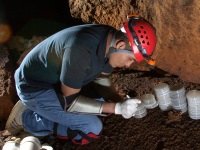
|
Marcos Terrazas studied the production of antibiotics of cave microoganisms
in the lava caves of El Malpais National Monument as part of the
Initiatives for Minority Student Diversity (IMSD) program at the University
of New Mexico.
|
Andi Hunter
Former student at the University of New Mexico in the Water Resources
Master's Program
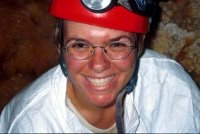
|
Andi Hunter studied the impact of introduced plasticizers in pools in
Lechuguilla Cave on indigenous and introduced microorganisms for her
Master's in the Water Resources Program at the University of New Mexico.
|
Rachel Schelbe
Former undergraduate student at the University of New Mexico
|
Need more here...
|
Kathy Dano (formerly Kathy Dotson)
Former undergraduate student at the University of New Mexico
|
Need more here...
Kathy's web site.
|
Donna Pham
Former undergraduate student at the University of New Mexico
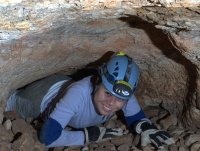
|
Need more here...
|






















